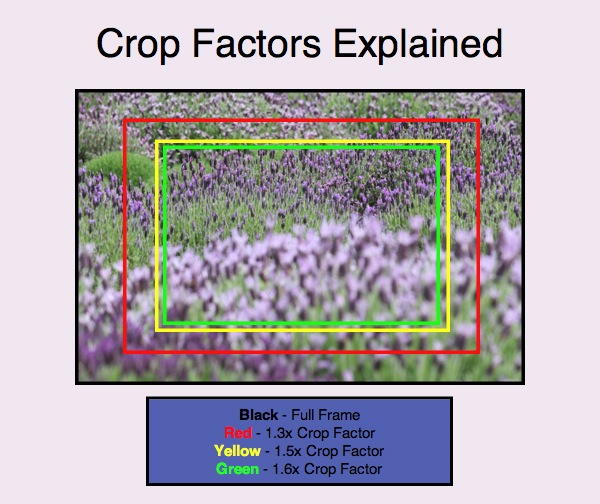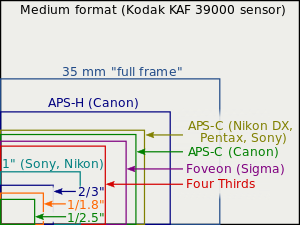Digital Photography Crop Factors, Focal Lengths and F-number
This is a series of a few posts to review the different aspects of a Canon DSLR camera system, mostly focused on full frame bodies. Here are the other posts in the series:
- Review of Canon 6D and Unboxing
- Introduction to Digital Photography nomenclature
- Crop factors (APS-C vs Full Frame), Focal Lengths, F-number
- Introduction to Canon Lens (EF and EF-S, despite the fact that EF-S does not fit on a full frame body)
- This post will include some standard information about different focal lengths and f-stops.
- It will also include two major different focusing hardware
- Introduction to Canon SpeedLite Flashes (works with any Canon DSLR, which is pretty amazing)
In this post will introduce Crop Factors, Focal Lengths and F-number (aperture). In the next post, I will review a few EF lenses and also cover briefly EF-S Lens and a few options.
Crop Factors
When you see a 18-55mm EF-S lens, the numbers are focal lengths. All lens focal lengths are based on a full frame camera. The EF-S is specifically made for Canon cropped frame cameras but the focal lengths are still based on a full frame camera. It makes comparisons easier.
To get the equivalent cropped frame focal length, multiply the number by 1.6 for an Canon APS-C sensor. This is only because the sensor is smaller, so you get a narrower field of view. You will need to look up the crop factor for your camera if its not a Canon DSLR. Any point and shoot cameras have a higher crop factor, usually above 2.
Here is an example of full frame vs cropped frame.

- Crop Factors Explained (http://digital-photography-school.com/)
For reference, any full frame (35mm equivalent) is in black. This goes for Canon, Nikon, etc that sells full frame. Full frame is full frame. Cropped frame is a little different. I know that Canon cameras with APS-C sensor has a crop factor of 1.6. As you can see, APS-C sensors from Nikon DX, Pentax and Sony is slightly bigger. This is all based on the sensor size. The bigger the sensor, the smaller the crop factor is. The reverse is also true so tiny point and shoots will have a much higher crop factor.
Here is a comparison from wikipedia:

Focal Lengths:
There are a few standard focal lengths based on a full frame camera:
- <24mm – ultra wide angle. Cheaper lens assemblies will have worst distortion, especially “wide open” (lowest F-number or highest aperture) at the lowest focal length on a zoom, usually 14, 16 or 17mm.
- 24mm-35mm – wide angle lens. Great for landscape pictures without much distortion
- 35mm – Standard landscape focal length. Old film cameras use this focal length
- 50mm – Great for taking pictures of people. Can generate sharp pictures of the subject with an artistic blurred background (bokeh).
- 70-85mm – great for portraits. The exact focal length depends on how far away you are from the subject. It also depends on if you want a full body shot, just the head, or head and shoulders. The range is 50-105mm for portraits.
F-number (Aperture)
You will hear everyone and their mothers raving about how low the f-stop is on their lens. In some cases, this is important. However, most of the time its not. Yes lower f-stops allow more light in, so it’s easier to take pictures even in low light or at night. However, there are potential distortion and field of view issues. Usually for any lens, the best pictures are taken a few f-stops above the limit. If the lens is rated at f/1.8 (Canon 50mm, for example), its best to take pictures with f/4 or f/5.6
In my opinion, when you’re on a budget, get as many appropriate lenses as possible without noting the aperture. Once you work with the lens enough and feel the need for a lower f-stop, then spend the money. Don’t blow all of your money on one great lens as you won’t have enough good lens to cover different shooting conditions. This is just my opinion so don’t flame me for that. If you have the money to spend on some great lens, I would highly suggest you do it now as you’ll save money in the long run. You don’t want to buy a decent lens, then sell it and buy the better one if you have the money upfront.
A personal example: My dad wanted and got a great 50mm lens. Manual focus, f/1.4 made by Carl Zeiss. $725 retail. He bought it brand new as there were very few used and not much price difference when buying used. With that same money, I bought the nifty fifty (Canon 50mm, f/1.8) for $75 used and also an used wide angle zoom L lens (Canon) 17-40mm f/4L for $569. I saved about 100 bucks compared to his 50mm lens and got a good 50mm lens and a great wide angle zoom lens. My dad’s potentially stuck taking great pictures at 50mm while I can take good 50mm pictures and great wide angle pictures.




Leave a comment